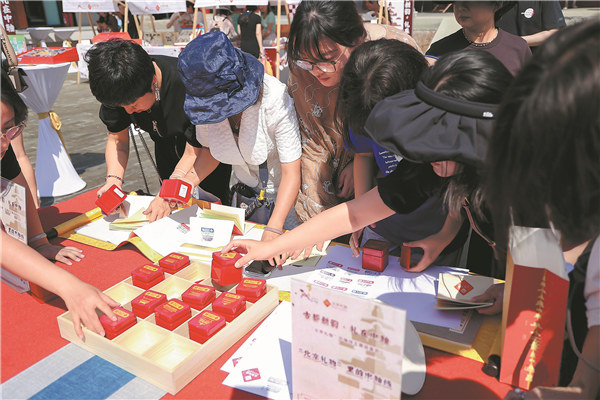

Ma Chi, general manager of Poly Culture Group's cultural communication digital technology center, introduces the digital display cabinet. While it appears to be an ordinary glass cabinet from the front, its sides are touch-sensitive screens that allow visitors to interact with the system.
A digital representation of an artifact is displayed on the screen and by simply tapping and dragging, visitors can rotate the object to view it from any angle to appreciate the artifact's details, such as inscriptions, and read about its history and background story.
One of the artifacts placed inside the cabinet is a bronze food vessel from around 2,900 years ago. Its lid is missing. Ma says that he and other digitalization experts worked with archaeological researchers to present the vessel and its history in digital format.
"By researching similar vessels, we digitally re-created a lid that's in line with historical facts. While no one knows where the lid is after several millennia, we can give viewers a concept of its complete form, which is something viewers wouldn't see from a traditional display case and without expert guidance," Ma says.
"Digital methods can better present artifacts before and after their restoration, as well as their history. In this way, the artifacts can be brought to life and visitors can gain a deeper understanding, recognize them and develop a sense of pride in our Chinese culture and history."
The 77 Cultural and Creative Park, also in Dongcheng district, exemplifies one of Beijing's urban renewal initiatives. Once an offset printing factory, it has been transformed into a cultural industry park centered on film, television and theater arts.